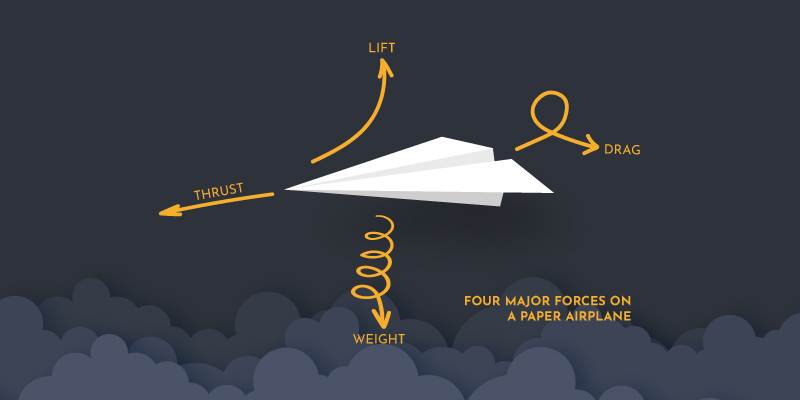
Paper airplanes are pretty popular hand made toys. Whether you're making them in school or at home, they're always a fun activity. But what exactly are paper airplanes? How do they work? The science of paper airplanes is actually quite simple.
Paper airplanes are simply folded pieces of paper that are designed to fly using the principles of aerodynamics. Aerodynamics is the study of how air moves around objects. Paper airplanes use these principles to fly because the paper is shaped in a way that allows it to catch the wind and stay in the air. The wings on a paper airplane help it to lift off the ground and keep flying.
Paper airplanes may be one of the simplest toys to make but it's important to remember that they're also based on the same principles of aerodynamics that keep real airplanes in flight.
Airplanes fly by using a combination of lift and thrust. The wings on an airplane are shaped in a way that helps create lift as the plane moves forward. The engine provides thrust, or forward movement, and the combination of lift and thrust makes the airplane fly.
Paper airplanes are a great way to introduce the physics of flight and demonstrate the basic principles of aerodynamics.
The physics of flight can be divided into four main forces:

Thrust is provided by the force that moves the airplane forward. Thrust is generally accomplished by mechanical means such like jets or props. In a nutshell, a propeller pulls air past itself creating horizontal lift that pushes the aircraft forward while jets combine air and fuel to create a controlled explosion that pushes the aircraft forward.

Lift is generated by the wings and keeps the paper aircraft in the air. It's created by airflow over the wings. The shape of the wings forces the air to move faster over the top than under the bottom. This creates a pressure difference that lifts the airplane up into the air.

Weight (due to gravity) is the force that pulls the airplane down. It's also important to keep weight distribution in mind as it greatly affects aircraft performance.

Drag is created by the friction of the air molecules against the plane, this friction slows the plane down. Beyond natural drag, raised wing spoilers allow can also increase drag, which essentially slows the aircraft so that it's able to brake more quickly.
All four forces must be balanced in order for an airplane to fly. If lift is greater than weight, then the airplane will rise into the air. If drag is greater than thrust, then the airplane will slow down and eventually fall out of the sky.
The same principles apply to paper airplanes. The only difference is that paper airplanes are much lighter than real airplanes, so they need less lift to stay in the air. Paper airplanes also don't have engines, so they can't generate their own lift. They rely on gravity and momentum to keep flying forward. If you're looking for a great STEM activity paper airplane templates are a great way to introduce these concepts to students of all ages.
Paper airplanes can teach children about the importance of weight distribution and balance. By creating a paper airplane with evenly-weighted wings, children can experiment with aerodynamics and learn how to make their airplane fly further and straighter.
If an airplane is not properly balanced, it will crash. For instance, if a paper airplane has a heavy nose it will fly but will have trouble gaining altitude. Whereas a tail heavy plane will climb at a fast rate, stall, and the nose will drop. Generally if a paper plane is more than slightly tail heavy it will not fly long before crashing. The size and weight of the wings should also be balanced. Poorly balanced wings will affect the lift and stability of the aircraft and will likely cause it to veer off course.
Essentially having a balanced center of gravity is the best practice. You can adjust the weight distribution by adding tape or paper clips to the paper airplane template but keep in mind that these items could also increase drag.
Ultimately using well-designed paper airplane templates (like ours) will be much more stable in the air, making it safer for children and bystanders.
In conclusion, the science behind paper airplanes is fascinating and can be used to teach children about the principles of flight. With a little practice, anyone can make a paper airplane that will fly well. So why not give it a try?
